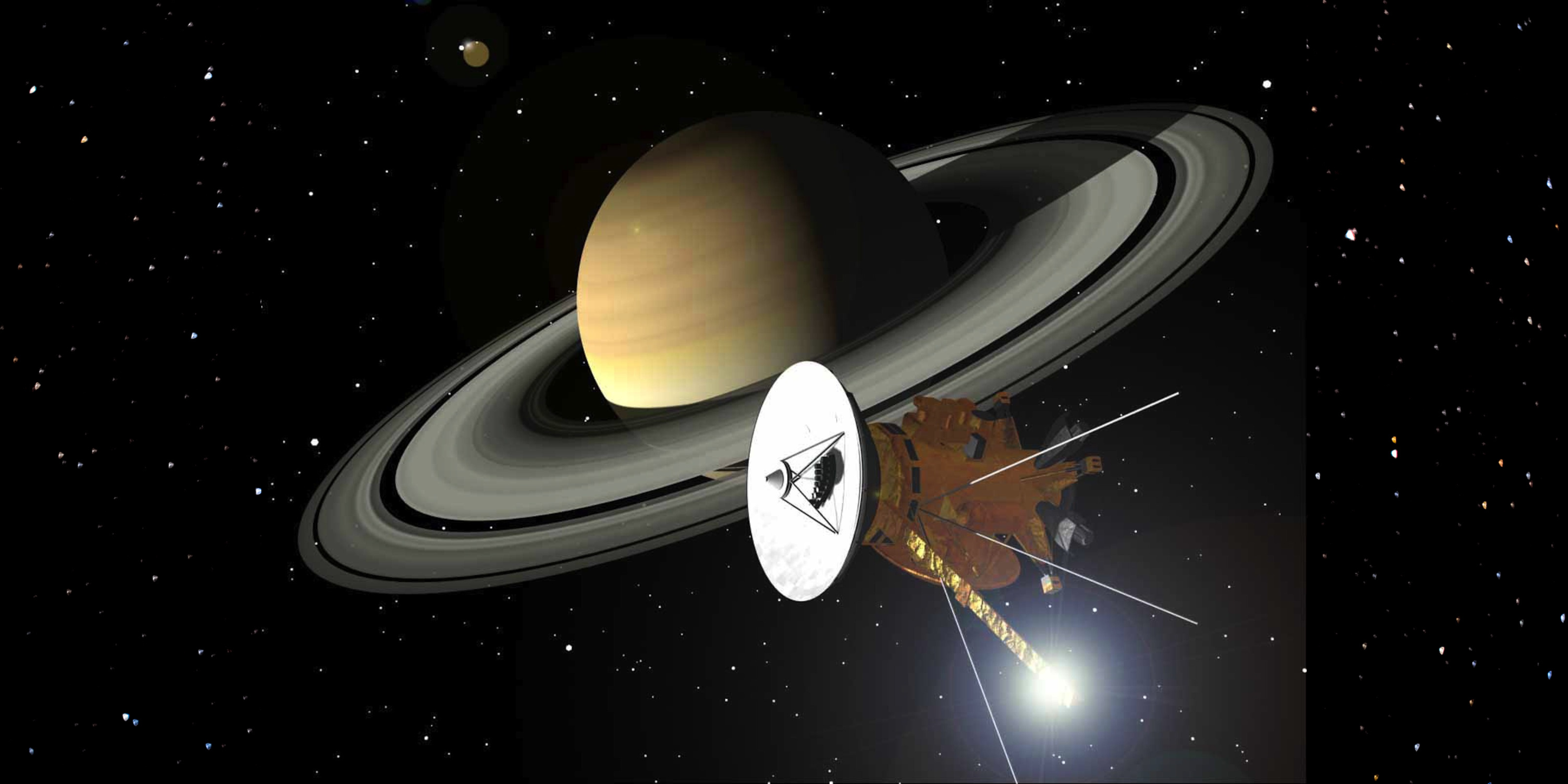
Craveology Cafe and the North Star Science Store are temporarily closed for renovation.

By Dr. Lisa Will, Resident Astronomer at the Fleet Science Center.
On Friday, September 15, 2017, NASA’s Cassini spacecraft will end its long mission by plunging into Saturn. Cassini was launched in 1997 and arrived at Saturn in 2004. It was the first spacecraft to go into orbit around Saturn and has sent back spectacular data that has vastly expanded our knowledge of Saturn, its rings and its moons.
Some of Cassini’s accomplishments include:
· Landing the European Space Agency’s Huygens probe on Titan.
· Discovering the water ice plumes of Enceladus.
· Verifying the existence of large lakes of hydrocarbons on Titan.
· Capturing images of large hurricane-like storms at each of Saturn’s poles.
· Revealing the rich complexity of Saturn’s rings.
· Discovering several small moons.
· Providing data to several thousand scientific papers.
If Cassini’s mission has been so successful, why is NASA ending it? The main reason is Cassini is running low on fuel. Intentionally crashing the spacecraft into Saturn ensures that it doesn’t crash into one of the moons and have an adverse effect on their environment, especially Enceladus and Titan.
Cassini’s final images will be taken on September 14, and the spacecraft will dive into Saturn’s atmosphere on September 15, one month shy of the 20th anniversary of its launch. NASA will begin its end-of-mission live broadcast (https://www.nasa.gov/nasalive) at 4 a.m. PDT on September 15, receiving Cassini’s last signal at 4:54 a.m. PDT (estimate). Because of the distance between Earth and Saturn, Cassini will have been gone for 83 minutes by the time the signal is received.
Here are few of my favorite Cassini images to share with all of you:
Saturn in Blue and Gold
In Saturn's Shadow
Fire and Ice
Enceladus the Storyteller
Colorful Colossuses and Changing Hues
Cassini mission website: https://saturn.jpl.nasa.gov/
Cassini Twitter: @CassiniSaturn
Wishing you clear skies!